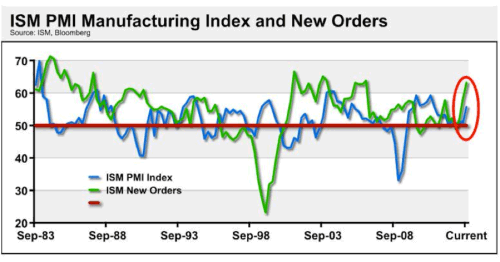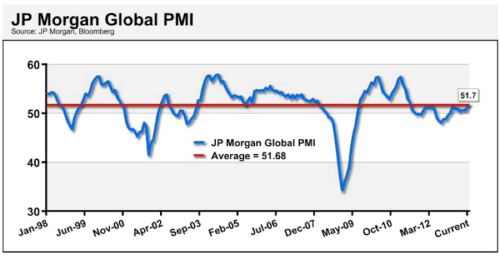One of the double-edged facets of managing assets is the absolute uncertainty that embodies every minute of every day. On any given day you have to separate the myriad of economic and market data from the relevant to the noise. This is easier said than done when one considers the “reading of the tea leaves” offers a multitude of scenarios that seem (especially after the events of the last five years) all to be plausible. We often discuss that the largest flaw from economists and prognosticators is the extrapolating current conditions for future results. Rather, we cite the “Wayne Gretzky example.” What made Wayne so great was his ability to skate to where the puck was going and not where it was at currently. Using this as a framework for market and economic expectations reveals two fundamental issues. First, the markets are not linear nor work on a defined formula for future targets. One could be absolutely correct in directions of broad economic patterns but not see the returns translate to the underlying assets. Secondly, this reveals the more pronounced trend for the future of asset management; being comfortable in the uncertainty and that a move back toward the story dictating winning strategies versus reverse engineering geometric formulas for undervalued or overvalued inflection points.
From 2009 we saw significant patterns where the “Sell in May” crowd’s strategy seemed iron clad. Though the debate of how profitable it is, is determined by re-entry points and taxable gains; however, it also was affirmed by the global macro events during each year. We had a natural disaster in Japan that shook up currency markets and macro-economic impacts as well as the annual summer European economic and banking tightrope. We now have a bit of a twist in that, fundamentally, the economy is beginning pick up domestically. Though the talk of tapering has dominated conversations, the bigger point missed by most is that this only occurs if the economy is improving. With no legislative mandate to have the Federal Reserve reduce their balance sheet, the only reason this talk becomes public is to re-configure the yield curve for less accommodation due to an improving credit environment and also to offer the new Fed Chairman (or woman) more flexibility when the worst kept secret in Washington becomes fact as Chairman Bernanke steps down.
The event that is justifiably sparking concern is the potential U.S. military strike on Syria that has gained momentum with support coming from areas of Congress for limited military action. This event has been given a 60-day timeframe, with possible extension of another 30 days if needed. Should this occur, we would expect a short-term rally in Treasuries and gold. We have turned bullish on gold from our neutral position back in June and continue to see upside beyond the increase in gold coming from the events in Syria.
The economy continues to strengthen on three significant fronts:
1) consumption driven by the net wealth effect,
2) the increase in manufacturing production and
3) housing and energy booms driving more job growth.
We have significantly detailed consumers and their increased propensity to spend based on their large increases in net worth. The new report will be coming out later this month. The manufacturing component has had some significant improvement in both the index and new orders.

*ISM: Institute for Supply Management, PMI: Purchasing Managers Index, the red 50 line indicates that when above that line shows expansion in manufacturing and below 50 a contracting environment.
As we wrote a few weeks ago, the European and China markets are improving. This is evidenced in the Global PMI index from JP Morgan that not only is above the “magic” 50 line where above 50 is seen as expansionary and below 50 contracting, but also above the 15-year average.

China’s PMI index has now moved to its highest level since April 2012. Another sign that the Beijing Put (Floored GDP growth of 7%) is alive and well.
All in all, the events of 2013 and the market’s reaction are similar to previous years when looking at it from a 30,000-foot view. The lyrics from the Talking Heads song, “Once in a Lifetime,” seemed to resonate: “The same as it ever was, the same as it ever was….” We could see a global economic jump as the economies of Europe and China begin to amplify the already-expanding U.S. growth versus weighing it down.
This commentary is for informational purposes only. All investments are subject to risk and past performance is no guarantee of future results. Please see the disclosures webpage for additional risk information. For additional commentary or financial resources, please visit www.aamlive.com/blog.





